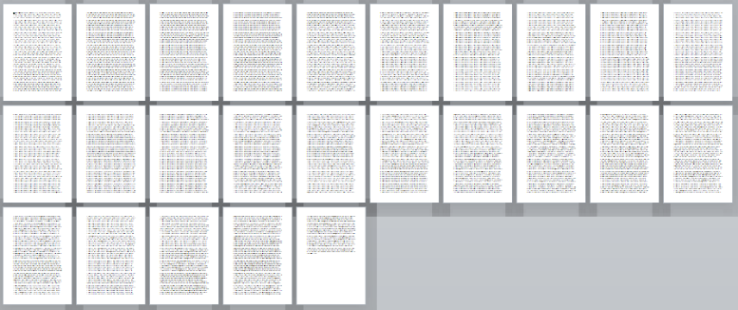The Static Closed Polyline
This activity belongs to the GeoGebra book GeoGebra Principia.
 , once cleaned up in a word processor and properly grouped, become lists.
, once cleaned up in a word processor and properly grouped, become lists.
VERSATILITY: List of Polylines
Lists allow a large amount of information to be grouped into a single object. In this example, humble polygonal lines, lacking the elegance found in many curves, make up for it with the versatility that their grouping in a single list provides. We can import large amounts of data into a spreadsheet. In this case, 6122 geographical coordinates from publicly available North American Cartographic Information Society data , once cleaned up in a word processor and properly grouped, become lists.
, once cleaned up in a word processor and properly grouped, become lists.
Each point list is called by the Polyline command, so we finally obtain a list of polygonal chains whose arguments are point lists. Unlike polygons, let's remember that the vertices of the polyline don't necessarily have to lie in the same plane. Through this process, we achieve a singular design: that of the Earth's coastlines. Thanks to this design, we transform an ordinary sphere into a model of the Earth's surface.
 in Dutch and English, as well as another one about Mercator
in Dutch and English, as well as another one about Mercator  . Afterwards, Carmen Mathias translated both into Portuguese (
. Afterwards, Carmen Mathias translated both into Portuguese ( ,
,  ). Closing the circle, I translated them into Spanish (
). Closing the circle, I translated them into Spanish ( ,
,  ). This collaborative behavior reaches its peak in the GeoGebra forum
). This collaborative behavior reaches its peak in the GeoGebra forum  .
.
- Coast = {Polyline((5; 3.142; 1.204), (5; 3.117; 1.211), (5; 3.067; 1.22), (5; 3.031; 1.219), (5; 2.975; 1.223), (5; 2.967; 1.216), (5; 2.981; 1.204), (5; 2.96; 1.199), (5; 2.93; 1.214), (5; 2.896; 1.212), (5; 2.863; 1.216), (5; 2.832; 1.215), (5; 2.809; 1.212), (5; 2.787; 1.217), (5; 2.79; 1.23), (5; 2.775; 1.237), (5; 2.74; 1.24), (5; 2.67; 1.236), (5; 2.624; 1.25), (5; 2.609; 1.26), (5; 2.452; 1.271), (5; 2.429; 1.264), (5; 2.441; 1.248), (5; 2.413; 1.25), (5; 2.4; 1.245), (5; 2.366; 1.251), (5; 2.336; 1.246), (5; 2.308; 1.254), (5; 2.291; 1.236), (5; 2.264; 1.242), (5; 2.242; 1.256), (5; 2.252; 1.264), (5; 2.244; 1.275), ...
 in Dutch and English, as well as another one about Mercator
in Dutch and English, as well as another one about Mercator  . Afterwards, Carmen Mathias translated both into Portuguese (
. Afterwards, Carmen Mathias translated both into Portuguese ( ,
,  ). Closing the circle, I translated them into Spanish (
). Closing the circle, I translated them into Spanish ( ,
,  ). This collaborative behavior reaches its peak in the GeoGebra forum
). This collaborative behavior reaches its peak in the GeoGebra forum  .
.Author of the construction of GeoGebra: Rafael Losada.